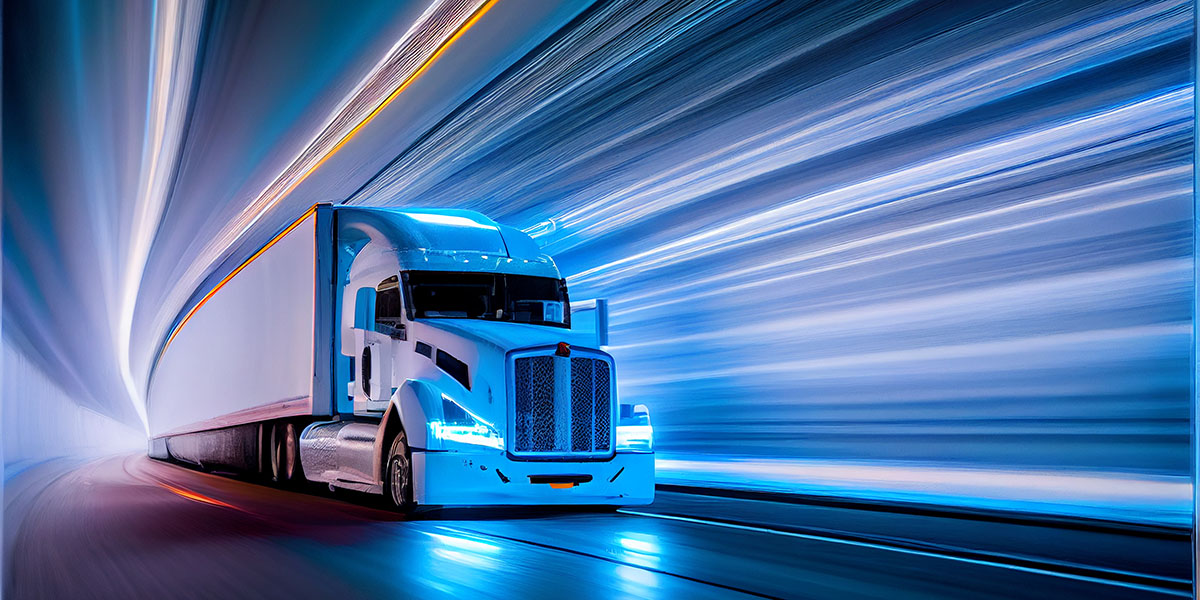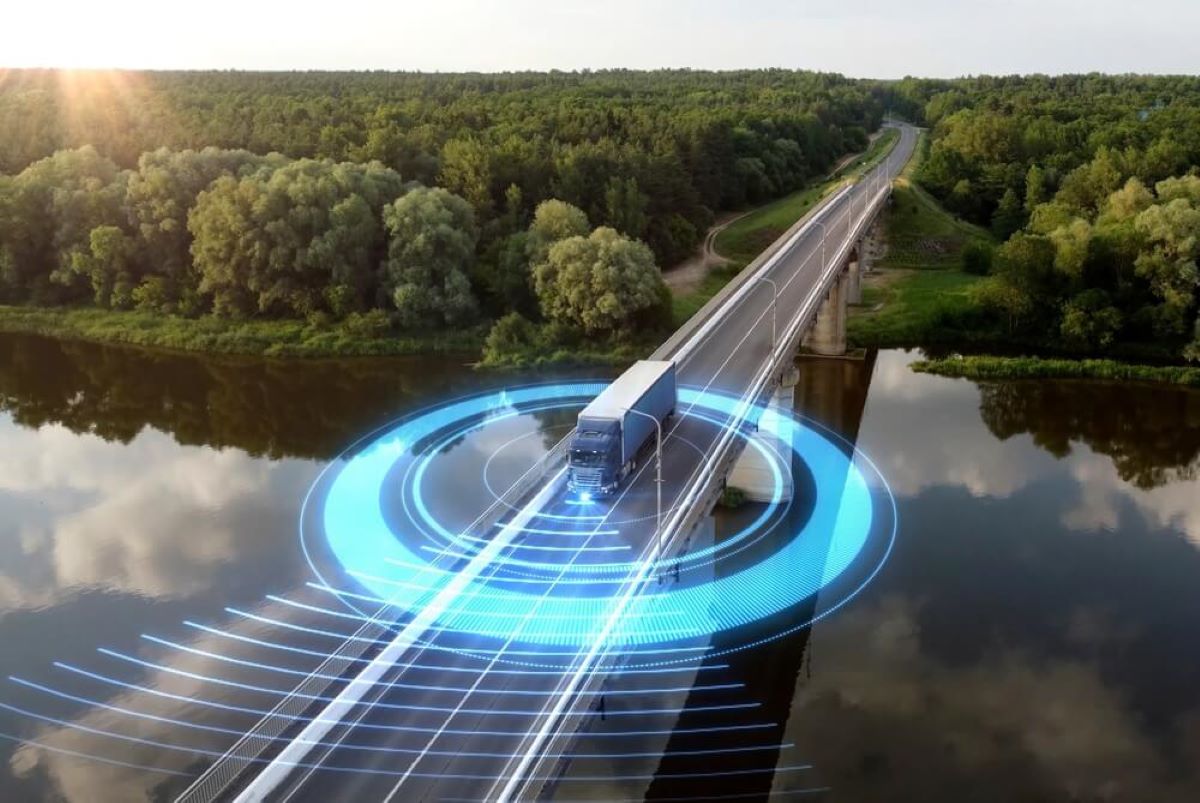The American Trucking Association estimates that there are about 3.6 million truckers in the U.S. today, making up roughly 2% of the national workforce.
According to the Census Bureau, the total earnings of individuals working in the trucking industry, including logistics and back-office support, amount to just over $300 billion.
Now, let’s consider a hypothetical scenario where all technological obstacles to autonomous trucking are resolved, leading to the complete replacement of truck drivers with self-driving vehicles.
While this scenario is unlikely in the near future, analyzing its potential economic impact offers valuable insights.
In this situation, the redistribution of the $300 billion currently allocated to trucking industry workers could look something like this:
- Transportation costs would decrease by approximately one-third, meaning businesses that pay for transportation as part of their goods’ costs would save around $100 billion. If these savings are partially passed on to consumers, both businesses and the general public would collectively benefit by that amount.
- AI companies engaged in the development of autonomous trucking technology would generate around $200 billion in annual revenue, though they would need to invest significantly to achieve this transformation. Each company would have had to secure billions in funding for research and development.
- The companies that successfully implement autonomous trucking could deliver significant returns for investors. However, others—due to poor execution, bad timing, or unfavorable circumstances—may fail. Estimates suggest that if these AI-driven firms can overcome regulatory and technological challenges, they could create between $1.75 trillion and $3 trillion in shareholder value.
- Meanwhile, transportation companies that fail to adapt to autonomous technology would see their market valuations decline. Though there would be a net increase in overall shareholder value due to higher profitability from AI-powered transport firms, wealth would shift toward investors backing successful AI companies.
In this envisioned future, consumers would save billions of dollars, AI companies would generate billions in new revenue, and investors funding these businesses could see over a trillion dollars in wealth creation.
But what happens to the 3.6 million truckers and logistics workers who would lose their collective $300 billion in annual wages? These individuals would have to either transition into new jobs or exit the workforce altogether.
With AI-driven job displacement accelerating, it’s crucial to consider how business leaders can facilitate a smoother transition.
How Can Business Leaders Guide the Shift to AI?
- Establish a unified industry vision outlining the intended benefits of AI.
- Track labor market shifts alongside AI adoption to inform strategic decisions.
- Develop a transparent, publicly accessible dashboard to monitor industry changes.
- Engage with key stakeholders to communicate expectations regarding labor transitions.
- Collaborate with academic researchers to measure economic shifts and develop potential solutions.
- Form industry and government working groups to conduct targeted experiments.
Examining the Impact of AI on Trucking Jobs
At present, trucking is the largest profession that AI has the potential to replace.
The adoption of AI in trucking will likely occur in stages, dictated by technological feasibility and profitability. Multiple scenarios could unfold based on these factors.
Back in 2018, five companies developing self-driving trucks reported plans to retain human drivers in some capacity.
They predicted that the role of truckers would shift to something “more akin to an airplane pilot,” where drivers would take control in situations that require human intervention, such as navigating off-highway routes.
Alternatively, improvements in remote control technologies—enabled by high-speed 5G networks and satellite systems like Starlink—could facilitate new operational models.
If remote-controlled trucks become a viable alternative, the industry will require fewer drivers overall.

However, if drivers need to meet autonomous vehicles at designated waypoints such as freeway exits to take manual control for urban deliveries, then the workforce reduction would be less severe compared to a fully remote-controlled system, but still significant.
Given the rapid advancement of AI, a critical question arises: Can the economy effectively absorb a displaced workforce at scale? This question becomes even more pressing if many truckers are unable or unwilling to reskill for new professions.
How Can Leaders Navigate AI-Driven Job Displacement?
While managing workforce transitions may seem beyond the scope of an individual AI company, business leaders must recognize that the success of AI ventures depends on more than just technical breakthroughs.
Addressing the broader social and economic impact is also essential. One proactive approach involves working within industry groups and trade associations to develop strategies that mitigate the societal effects of AI adoption.
Strategies for a Fair and Sustainable AI Future
- Develop a Shared Industry Vision
Businesses should align on a clear outlook for AI’s role in their industry, considering both benefits and challenges—including workforce changes. Establishing this vision helps guide decision-making toward a future that maximizes benefits for all stakeholders. - Invest in Long-Term Workforce Impact Studies
Continuous tracking of AI-driven workforce shifts, including job creation and elimination, can help inform proactive responses.
While this may feel like observing a rising tide rather than running for higher ground, informed decision-making starts with data collection, followed by strategic action. - Establish a Publicly Accessible AI Dashboard
An industry-wide dashboard could provide transparency into AI adoption trends. In the trucking sector, for example, it could track metrics such as the number of autonomous trucks in operation, their share of the total fleet, AI company market share, workforce changes, and the effectiveness of retraining programs for displaced workers. - Engage a Broad Range of Stakeholders
Engaging with labor organizations, academic institutions, and policymakers helps ensure a balanced transition. Open dialogue about AI’s economic benefits and labor impacts can also shape regulatory frameworks that promote fair outcomes. - Leverage Academic Expertise
Academics can contribute valuable insights by tracking labor shifts and designing transition strategies. However, implementation ultimately falls to industry leaders, making partnerships between businesses and universities critical for driving practical solutions. - Conduct Industry-Government Pilot Programs
Exploring policy initiatives such as universal basic income (UBI) experiments or workforce retraining subsidies could help ease the transition. OpenAI’s Sam Altman has co-funded UBI trials, and Canada has conducted similar experiments.
Historical shifts, such as the Industrial Revolution’s reduction of the workweek from six to five days, suggest that structural changes such as a four-day workweek—could play a role in distributing AI-driven economic gains more equitably.
Toward an Equitable AI Future
While there is no definitive solution to workforce displacement caused by AI, what is needed is a collective effort by business leaders to shape the transition thoughtfully.
Industries should work together to set clear goals, monitor economic shifts, and systematically explore ways to guide displaced workers toward new opportunities.
So far, there has been little meaningful leadership in addressing large-scale AI-driven job displacement.
However, now may be the time for industry leaders and trade associations to step up systematically tracking AI’s impact on their workforce and implementing programs that ensure a balanced and beneficial transition for society.

